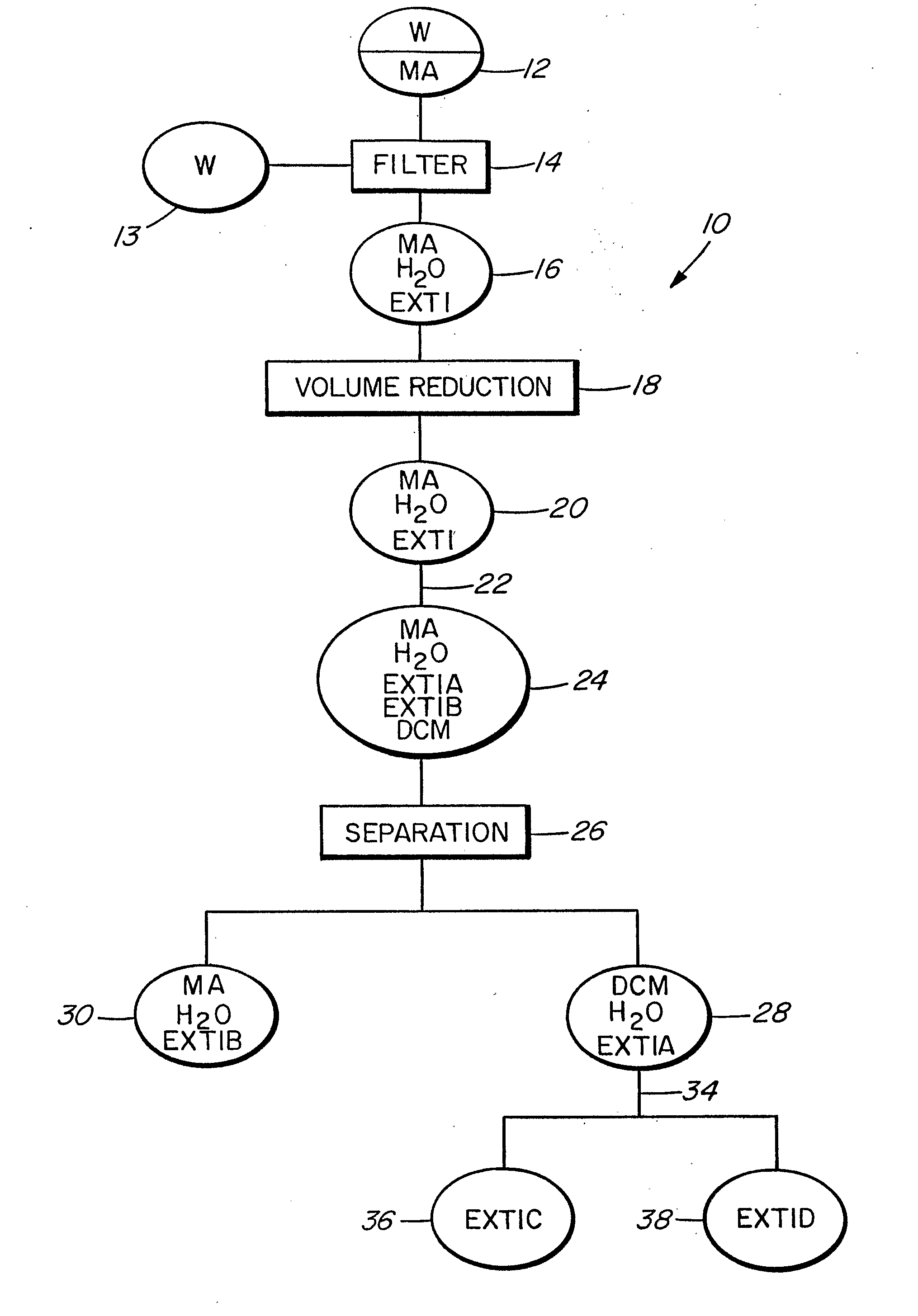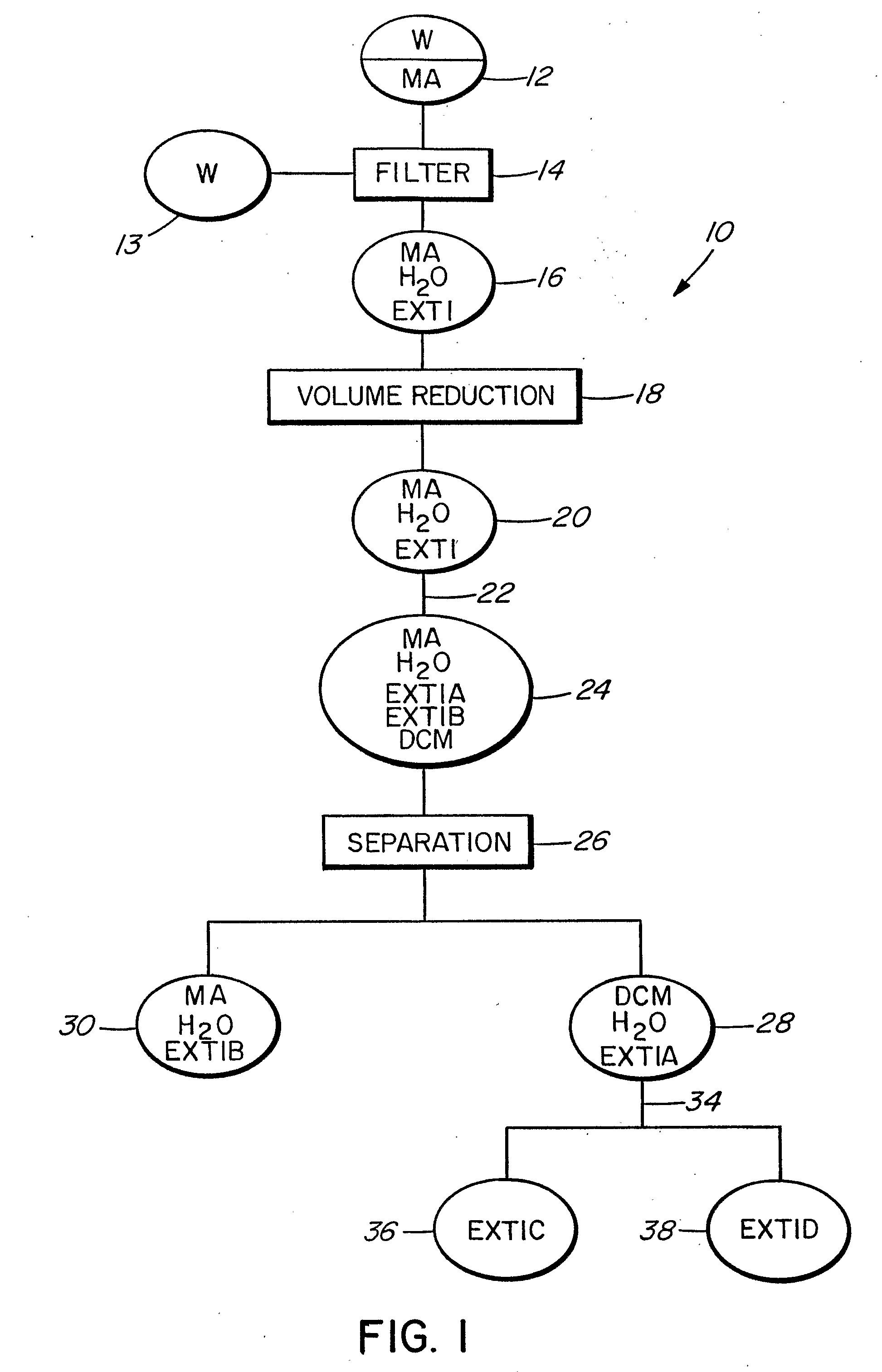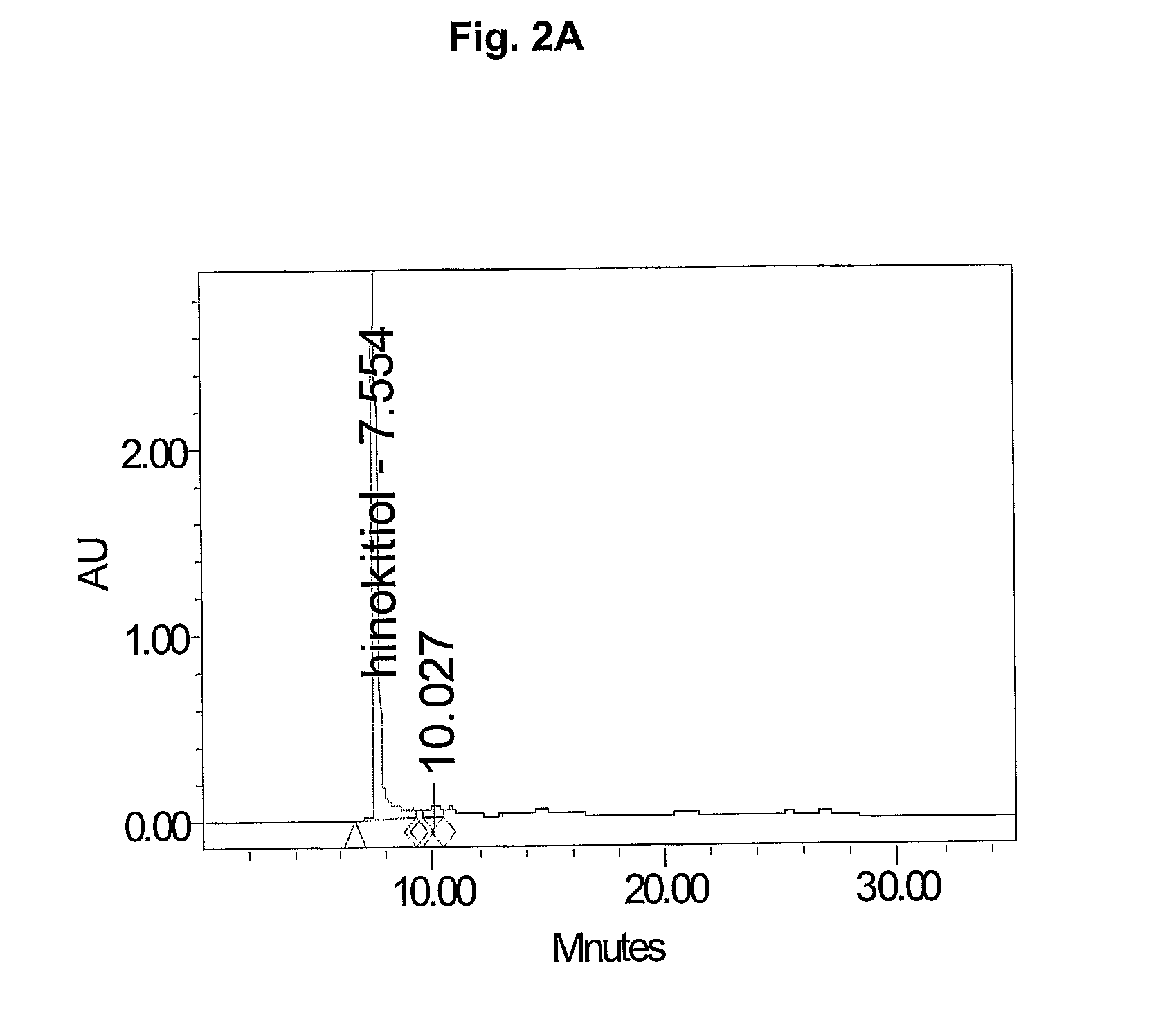Plant Materials Extraction Method
a technology of plant materials and extraction methods, applied in the field of extraction methods of plant materials, can solve problems such as dispersal
- Summary
- Abstract
- Description
- Claims
- Application Information
AI Technical Summary
Benefits of technology
Problems solved by technology
Method used
Image
Examples
example 1
Extraction Process
[0097] The extraction procedures given in the following section of Example 1 describes a small commercial scale extraction conducted in an explosion proof facility, using trained staff and explosion-proof apparatus dedicated to that purpose.
[0098] Approximately 300 litres of run-of-mill western red cedar tissues freshly macerated in a commercial flail shredder were loaded into a Littleford model FKM-600-D-2Z stainless steel tank of 600 litre capacity. Tank doors were sealed shut and fresh commercial grade methyl alcohol (MA) (methyl alcohol, CH3OH, supplied as 99% pure commercial grade by Univar Canada Ltd.) was added through an inlet valve in sufficient quantity to cover the plant materials. An agitator built into the inside of the tank was used to stir the mixture for two minutes. The mixture was allowed to interact at 30° C. and 760 mm Hg pressure for about 12 hours.
[0099] The MA was then allowed to drain away under gravity via a drain valve at the base of th...
example 2
Analysis of Extracts
[0110] Gas chromatography was carried out on Extract 1A to identify the volatile compounds derived from Thuja plicata Don. The method of running the sample was as follows: The run time used was 33 minutes. An Agilent Technologies 6890N Network GC System gas chromatography device was used. The Carry Gas was Helium and the injection volume was 1 μl.
[0111] Results of the GC are shown in Table 4.
[0112] The results showed a number of peaks at 16 and 24 minutes some of which are known compounds methyl thujate, thujic acid, beta thujaplicin, and gamma thujaplicin.
[0113] Readings were done on batches of Extract 1A that had been processed in the initial plant materials extraction for various amounts of time, and the results showed a time dependent increase in the relative amounts of volatile compounds extracted. The data are shown below. Two injections of 2 μl each were run and the results averaged below.
TABLE 4Average Peak Areas for Extract GCMethylBatchthujateThuj...
example 3
Comparison of Extraction Methods
[0117] Extraction methods were compared to determine the relative compositions and efficiency of yields.
[0118] a. Extraction with Water.
[0119] A sample of cedar wood was placed in a container of water and heated to 95° C. The sample was allowed to soak for 1-6 hours. The aqueous phase was recovered by filtration and the ‘spent’ extracted plant materials were discarded. A sample of the aqueous phase was taken for analysis of its composition. Results are shown in Table 5.
[0120] b. Extraction with Steam.
[0121] A sample of wood was placed in a metal retort and heated with ‘dry’ steam delivered at temperatures ranging from 150-190° C. at absolute pressure of between 96.5 kPa and 193 kPa for a period of 1-6 hours. The hot vapours exiting the retort were condensed in a water-cooled heat exchanger running at from 6-26° C. at atmospheric pressure. Separation of the extract from the water was made using density differences between the water insoluble extra...
PUM
| Property | Measurement | Unit |
|---|---|---|
| temperatures | aaaaa | aaaaa |
| pressures | aaaaa | aaaaa |
| temperatures | aaaaa | aaaaa |
Abstract
Description
Claims
Application Information
 Login to View More
Login to View More - R&D
- Intellectual Property
- Life Sciences
- Materials
- Tech Scout
- Unparalleled Data Quality
- Higher Quality Content
- 60% Fewer Hallucinations
Browse by: Latest US Patents, China's latest patents, Technical Efficacy Thesaurus, Application Domain, Technology Topic, Popular Technical Reports.
© 2025 PatSnap. All rights reserved.Legal|Privacy policy|Modern Slavery Act Transparency Statement|Sitemap|About US| Contact US: help@patsnap.com



